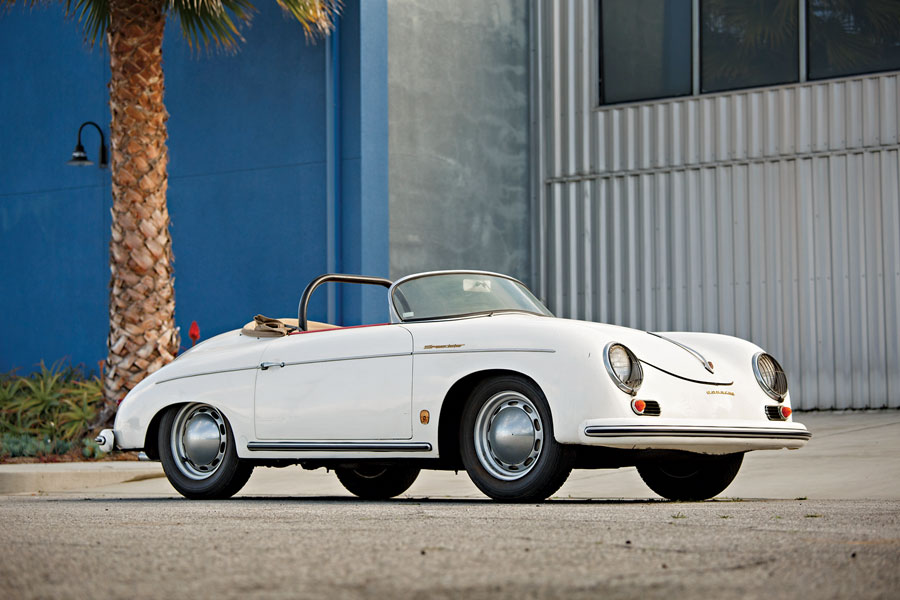Chassis Number: 80753
Porsche presented here is a recently discovered garage-find example of the most iconic 356 model — the Speedster.
According to the Porsche Kardex, this rare Pre-A Speedster was completed on July 29, 1955, finished in white and bound for the U.S., where it was retailed by official U.S. distributor Hoffman Motors in New York. Remarkably, this car has resided in Southern California for over 50 years, as evidenced by its classic black plates and file of original records dating back to 1965.

